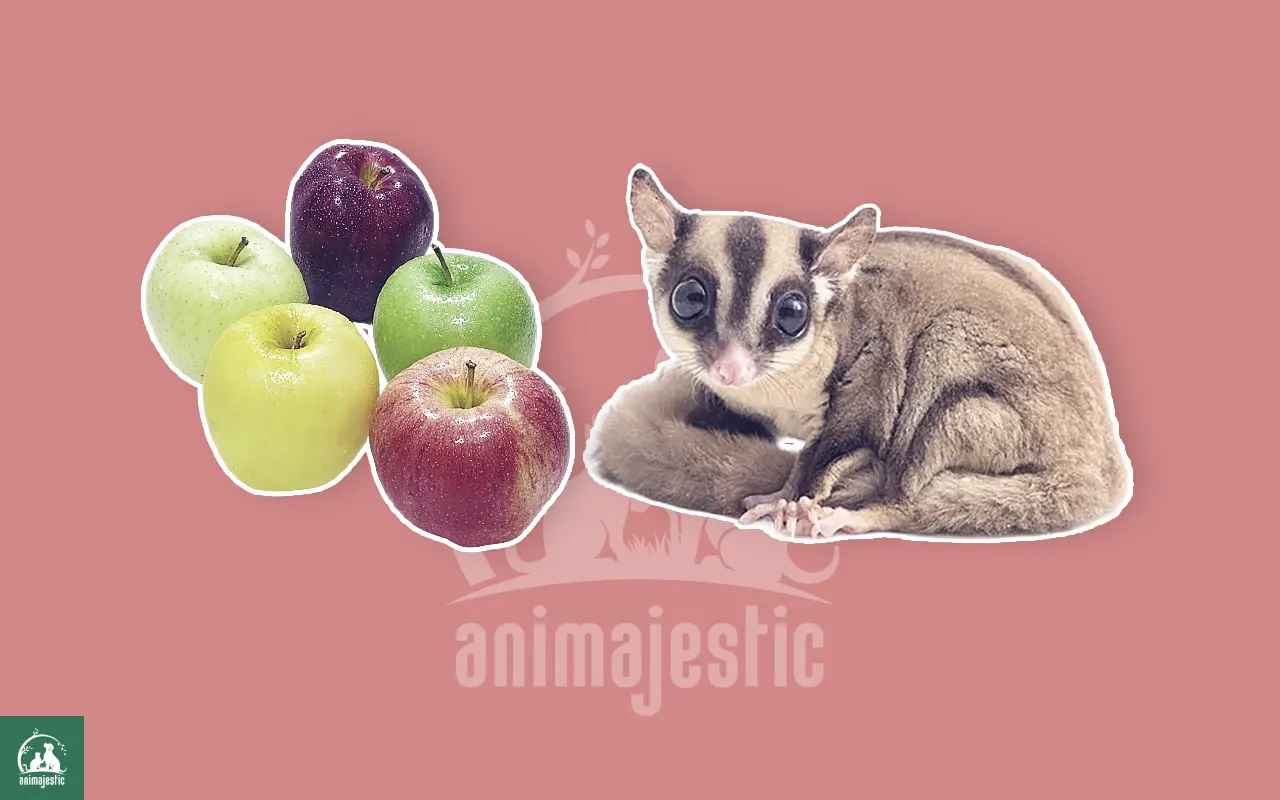In recent years, Sugar gliders have become a popular pet for people looking for an exotic and unique animal companion.
However, caring for them can be tricky, as they require a specific diet to maintain their health.
The question “Can Sugar Gliders Eat Apples?” is just one of many other questions we have seen and this is because apples are one of the top most consumed fruits by humans.
First, it’s important to remember that sugar gliders are omnivores, which means that they eat both plant and animal-based foods.
In their natural habitat, sugar gliders eat insects, small animals, nectar, fruit, and other plant material.
In captivity, it’s important to provide a varied diet that includes protein-rich foods like insects, lean meats, and eggs, as well as a variety of fruits and vegetables.
The Nutritional Value of Apples for Sugar Gliders
Apples are a great source of natural sugar, vitamins, and dietary fiber for sugar gliders. Eating small amounts of apples can provide sugar gliders with the energy boost they need to be active and playful.
Apples contain pectin, a type of soluble fiber that can aid in digestion, promote bowel regularity, and reduce inflammation, which is beneficial to sugar gliders.
They also contain vitamin C, which supports the immune system, and vitamin K, which is essential for blood clotting.
Can Sugar Gliders Eat Apples?
YES √, sugar gliders can eat apples. Apples are a healthy snack for sugar gliders and are a great source of natural sugar, which provides them with an energy boost.
As said earlier, these fruits also contain essential micronutrients, which are part of a healthy diet.
The dietary fiber present in apples helps to promote regular bowel movement in sugar gliders, which is crucial for optimal health.
While apples are a great snack for sugar gliders, they should be fed in moderation.
Consuming large amounts of apples can lead to digestive issues and weight gain, which can be harmful to sugar gliders.
It is also important to note that the seeds contain trace amounts of cyanide. Cyanide is a toxic substance that can be harmful to animals and humans in large doses.
How to Feed Apples to Sugar Gliders
When feeding apples to sugar gliders, it’s essential to ensure that the fruits are fresh and washed thoroughly to eliminate any pesticide residue.
It’s also important to follow some guidelines to ensure their safety and well-being:
- Offer small pieces: Sugar gliders have small digestive systems and can easily become impacted if they eat too much fiber at once. To avoid this, cut apples into small, bite-sized pieces before offering them to your sugar glider.
- Remove the seeds: Apple seeds contain trace amounts of cyanide, which can be toxic to small animals like sugar gliders. To be safe, always remove the seeds and core before offering apples to your sugar glider.
- Choose organic apples: Apples are often sprayed with pesticides and other chemicals, which can be harmful to sugar gliders. To avoid exposing your pet to harmful chemicals, choose organic apples whenever possible.
- Offer a variety of fruits and vegetables: While apples are a healthy and delicious treat for sugar gliders, it’s important to offer a variety of fruits and vegetables to ensure they receive a balanced diet.
Some other good options include bananas, kiwis, grapes, carrots, and leafy greens. Sugar gliders also require fresh greens, proteins, and occasional supplements to maintain optimal health.
Conclusion
Sugar gliders can eat apples, and it is a healthy and safe snack to include in their diet. Any questions or concerns about your sugar glider’s diet should be addressed by an experienced veterinarian.
By providing your sugar glider with a balanced diet, including fresh apples as a treat, you are taking the essential steps required to ensure their overall well-being.
